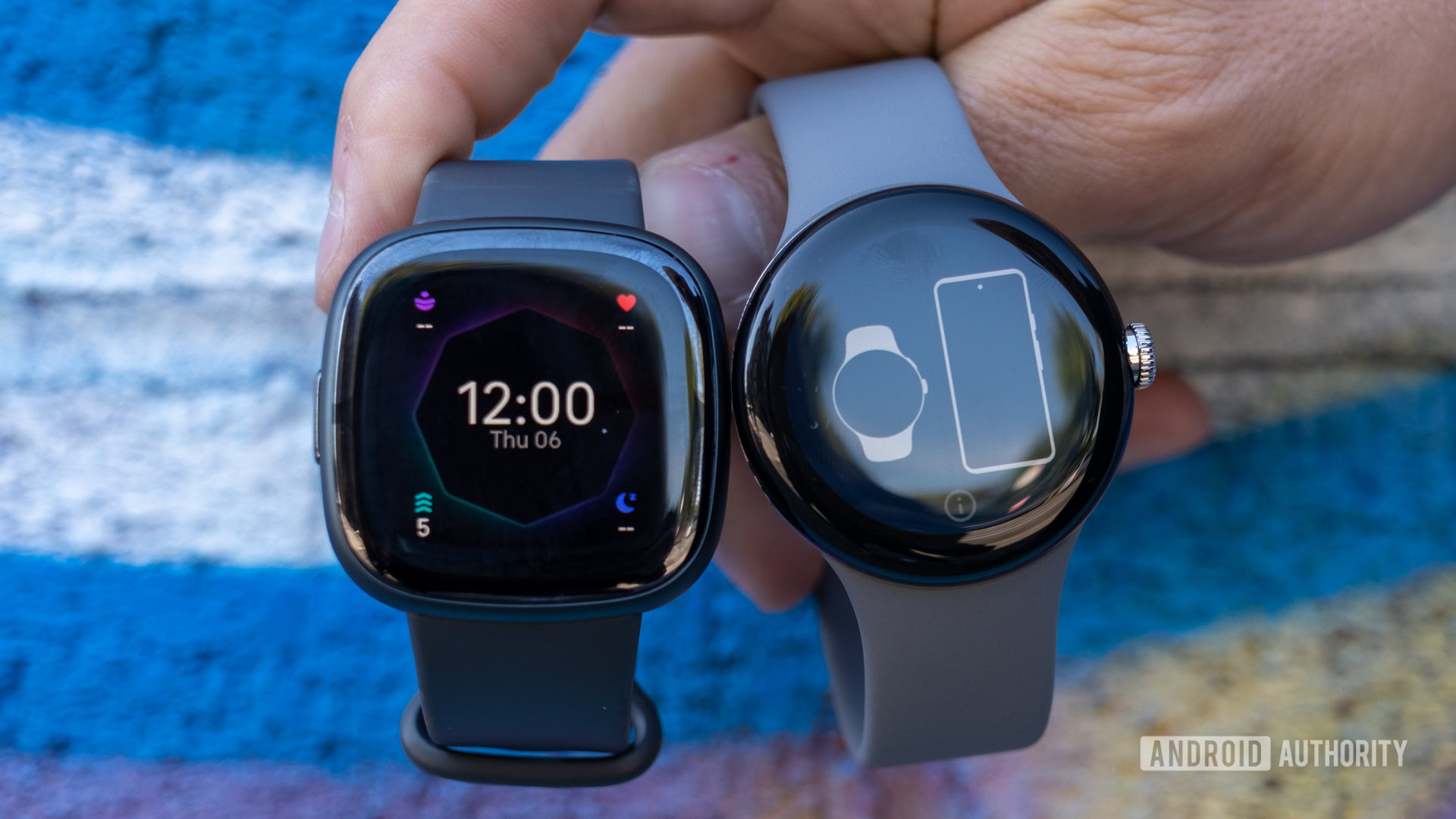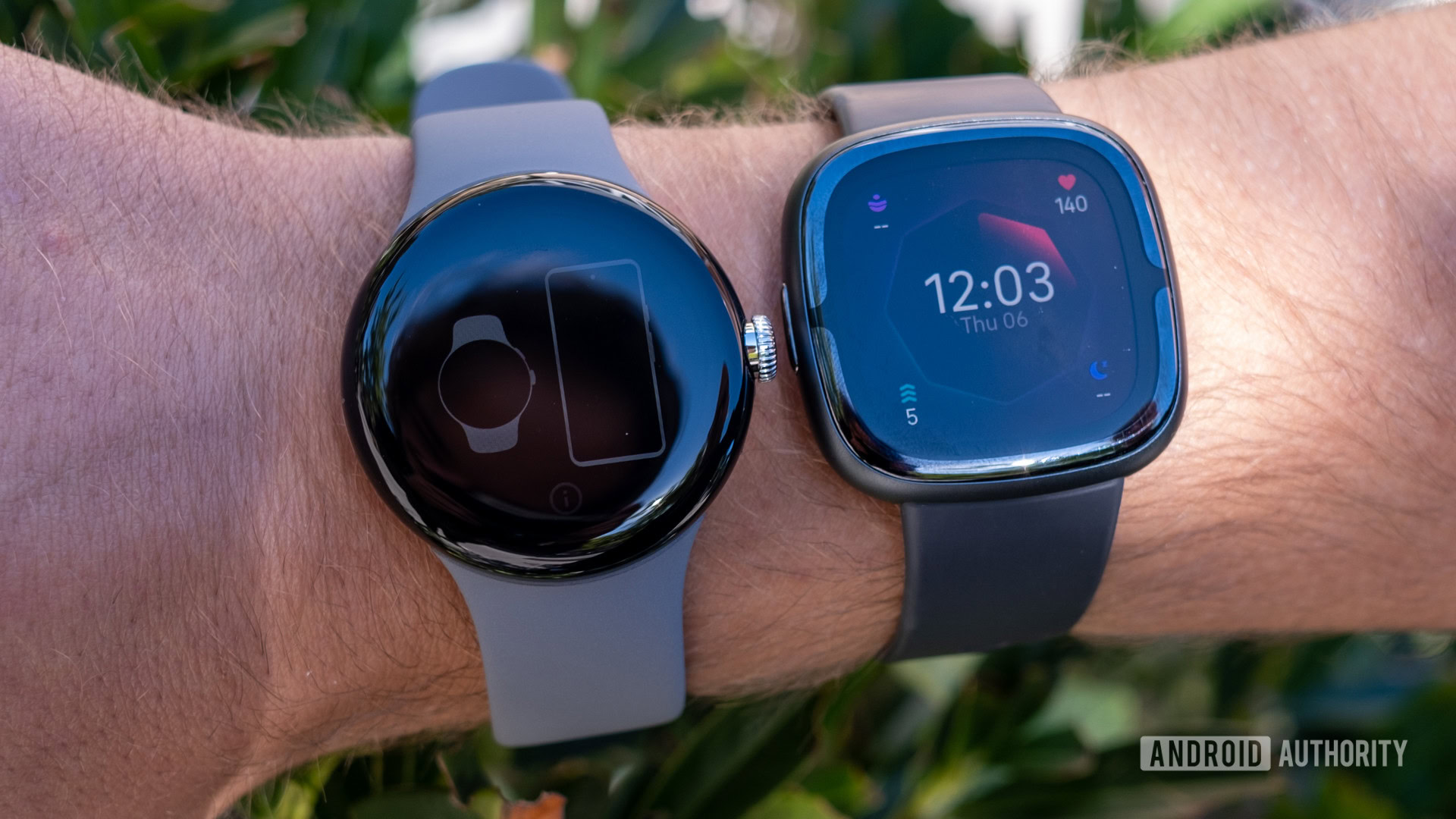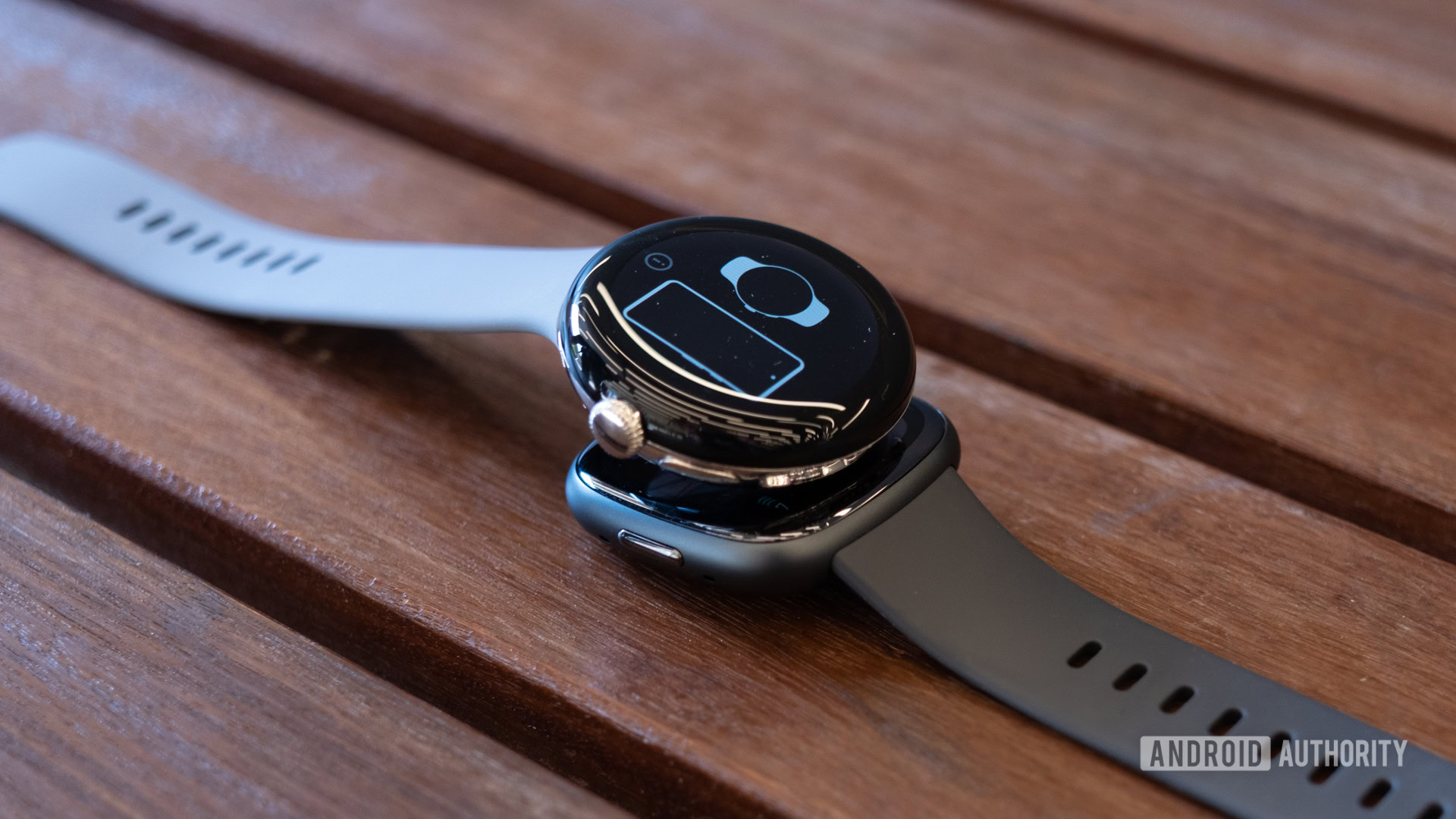Affiliate links on Android Authority may earn us a commission. Learn more.
Google and Fitbit are denying us the super-watch we all want

We’ve been waiting years to see it and now we finally know everything there is to know about the Google Pixel Watch. Announced this week alongside the Google Pixel 7 series, the Wear OS-powered smartwatch runs on a very old processor, has a tiny battery, and commands a higher price than its closest competitors. We haven’t had the chance to give it a full review yet, but on paper, it’s not the industry-defining timepiece we were hoping for.
Meanwhile, just a few weeks ago, Fitbit launched its newest premium smartwatch: the Fitbit Sense 2. While the Sense 2 has health-tracking capabilities we’ve never seen on any other watch before, it surprisingly lacks some integral features of its predecessor — Google Assistant support, third-party apps, and Wi-Fi connectivity. This makes the Sense 2 objectively inferior to the first Sense, at least when it comes to its usability as a smartwatch.
The Pixel Watch and the Sense 2 are inextricably linked whether Google likes it or not.
Interestingly, both watches also have built-in hardware that they can’t access. In the case of the Sense 2, there’s a built-in Wi-Fi module but Fitbit won’t let you connect to it with the software. Likewise, Google informed us that the Pixel Watch has the ability to take SpO2 readings, but users won’t have access to that metric, at least at launch.
What do these things have to do with each other? Well, for starters, Google now owns Fitbit. The Sense 2 is the first Fitbit smartwatch launched after the acquisition, so it’s easy to assume that many of its missing smartwatch features are due to Google. Secondly, the Google Pixel Watch incorporates Fitbit health sensors and tracking algorithms. It’s a pseudo-Fitbit, since it works like an entry-level fitness tracker but runs Wear OS as a platform.
When you put all this together you quickly realize that both brands are likely limiting their respective products to avoid competing with one another. However, the two watches combined together could have made a super-watch — one that offers everything both of them do well with no compromises. Instead, we’re left with a Google smartwatch that’s disappointing for some and a Fitbit smartwatch that’s disappointing for others.
In other words, no one is getting what they want this time around.
Google Pixel Watch or Fitbit Sense 2? Either way, you lose

The Google Pixel Watch has a few strengths. First, it looks terrific. If your primary concern is having a lovely timepiece on your wrist, it is now one of your best choices. This is something the Fitbit Sense 2 cannot claim.
Although the Pixel Watch is running on a years-old processor, it has more RAM than we’ve ever seen in a Wear OS watch: a full 2GB. This should help it have a smoother software experience when compared to the majority of other Wear OS watches on the market. The Fitbit Sense 2, meanwhile, is running on an unknown custom chipset, but since Fitbit watches don’t carry the bloat of Wear OS, they have always provided a smooth experience.
The Pixel Watch excels at some things while the Fitbit Sense 2 excels at others, making neither watch a true winner.
The Pixel Watch will have Google Assistant access, although how reliable it will be remains to be seen. Historically, Assistant hasn’t worked well for Wear OS and we believe Google should fix it as soon as possible. Meanwhile, the Fitbit Sense 2 doesn’t have Assistant access but offers Amazon Alexa instead.
One area where the Fitbit Sense 2 undoubtedly wins is battery life: It can go over six days without a charge. According to Google’s own promoted metrics, the Pixel Watch won’t make it much longer than 24 hours. The Sense 2 also wins with fitness tracking, as it has more sensors and can track far more metrics than the Pixel Watch.
Finally, we should mention that the two wearables do share a lot in common. They will both see software support for at least three years. They both incorporate Fitbit health tracking, have plenty of easily swappable bands, can receive phone calls, have onboard GPS, and feature 5ATM swim proofing.
It's very clear that Google wants the Pixel Watch to go to smartwatch buyers and the Sense 2 to go to fitness tracker buyers.
However, it’s very clear that Google wants the Pixel Watch to go to smartwatch buyers and the Sense 2 to go to fitness tracker buyers. Neither watch does everything the other does.
Now, imagine if they combined forces

Keeping the two wearables different from one another appears to make sense (bah dum tsss). However, Google seems to be neglecting the idea that there are buyers out there who want both watches. In other words, there are people who want the robust health-tracking, long battery life, and unburdened software experience of the Sense 2, on top of the Pixel Watch’s app gallery, deep integration with Android, and overall design. I know these buyers exist because I am one of them.
If Google designed the hardware and helped Fitbit augment its software, we'd have the king of all smartwatches.
Knowing what we now know, I can’t help but think Google and Fitbit dismissed the idea of creating such a watch — at least for now. Between the two of them, Fitbit is the more experienced smartwatch maker, considering Google has released exactly zero watches before this week. If they set out to deliver a spectacular watch that would give consumers everything they want, the logical move would be to have Google help Fitbit make a better version of the Sense. After all, the original Sense proved that Fitbit could — with the right resources — build a great smartwatch. It had already created a watch with a wealth of fitness features, terrific battery life, good software support, smooth usability, etc. It just needed help with making the watch look nicer and crafting a more robust app library.
But it’s quite obvious Google wouldn’t have been happy with a Fitbit being its flagship smartwatch. The very existence of the Pixel Watch proves the company wanted its own flagship wearable, not a Fitbit.
I’m no conspiracy theorist, but it’s difficult not to read between the lines here. I can imagine a meeting in which Google tells Fitbit it can’t do A, B, and C with the Sense 2 to avoid competing with the Pixel Watch, and Fitbit responds in kind to say that the Pixel Watch can’t do X, Y, and Z. Or maybe Fitbit didn’t even have a say in the matter. Maybe Google just laid down the law and Fitbit needed to fall in line. I don’t know how it went down, but it’s easy to tell that something significant happened, otherwise why would we have these two watches the way they are? And why would each of them include hardware bits that aren’t enabled (at least at launch, for now)?
Instead of getting the 'one' watch, I'll need to make an inevitably disappointing choice.
Think of what could have been, though, had the companies truly combined forces to create one watch to rule them all. We could have had a beautiful watch with every health tracking feature, six or more days of battery life, all the smartwatch features you need, access to the most important apps, and smooth interactions with Android. Even if that watch cost $500+, I would have bought it in a heartbeat.
Instead, it looks like I’ll need to make an inevitably disappointing choice. Do I go with a feature-rich, beautiful watch with terrible battery life and weak fitness tracking or a feature-anemic bland fitness tracker that lasts for a week and tracks every health metric I can think of? Some decision.
Of course, I could just wear two different watches on each wrist. Google would probably be happy with that.